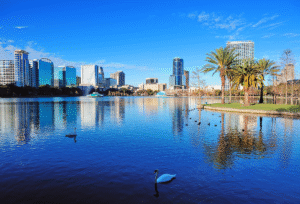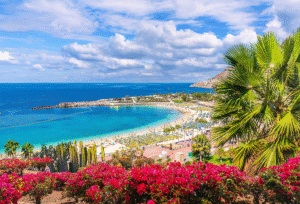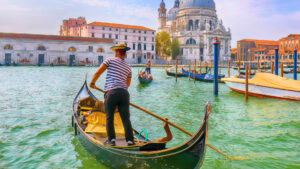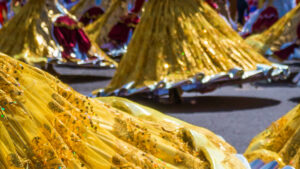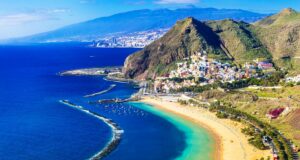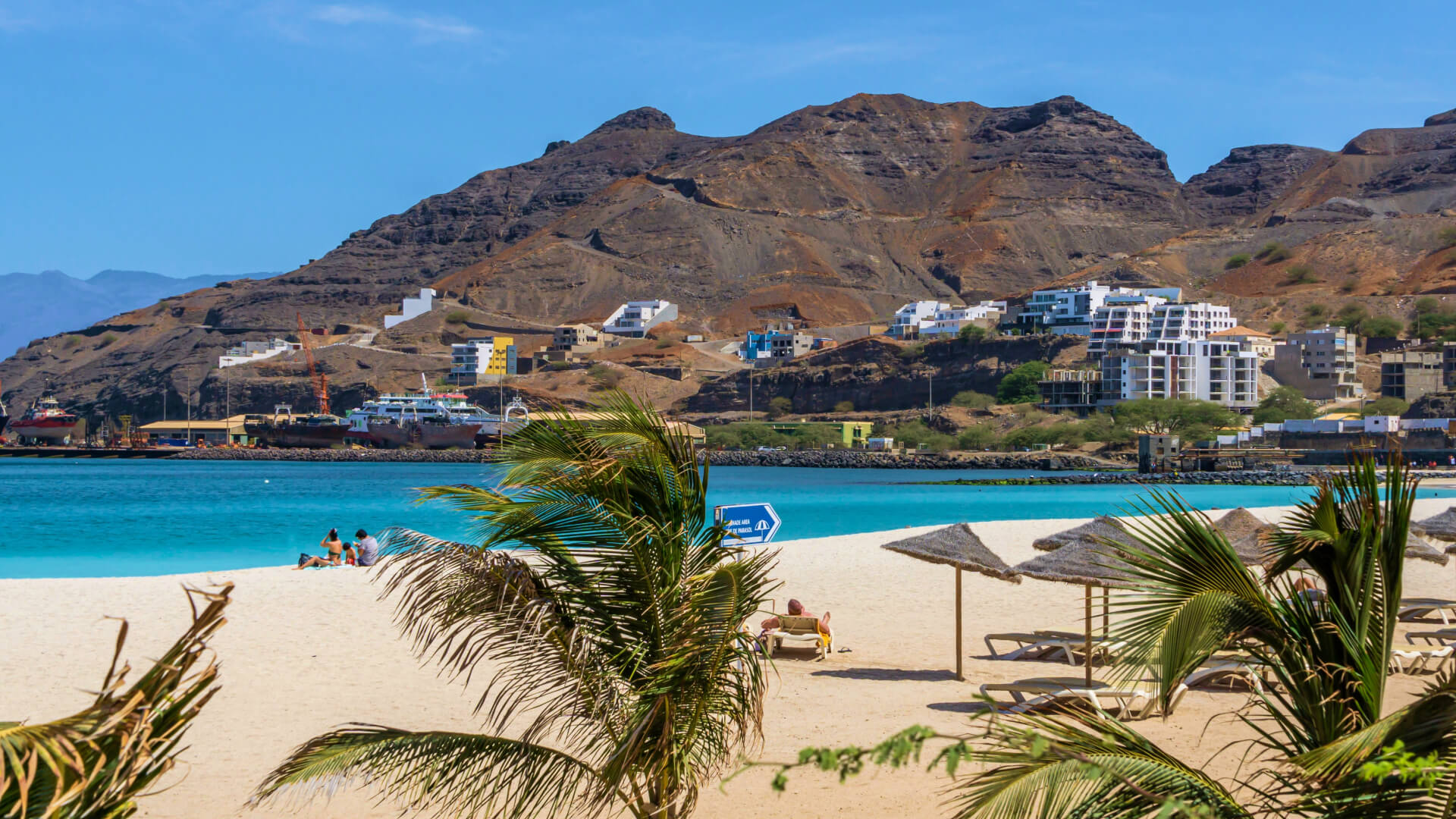
Made up of 10 small volcanic islands, Cape Verde is the destination of choice for sun-seekers and watersports enthusiasts alike. – plus, with all-day sunshine even in winter months, these islands are great for adventures all year round.
Each island is unique but all boast a ton of fun activities and what better way to tick it all off than island hopping in Cape Verde…
Why you should island hop in Cape Verde
- Bask in warm temperatures on soft sand beaches with incredible views at every turn
- Experience the vibrant cultures and unique adventures that are on offer on each island all in one trip.
When is the best time to travel to Cape Verde?
The best time to island hop in Cape Verde tends to be during the dry season – from November to July – when the temperatures are around 22°C to 26°C. and rainfall is at a minimum.
What are the best islands in Cape Verde?
Boa Vista
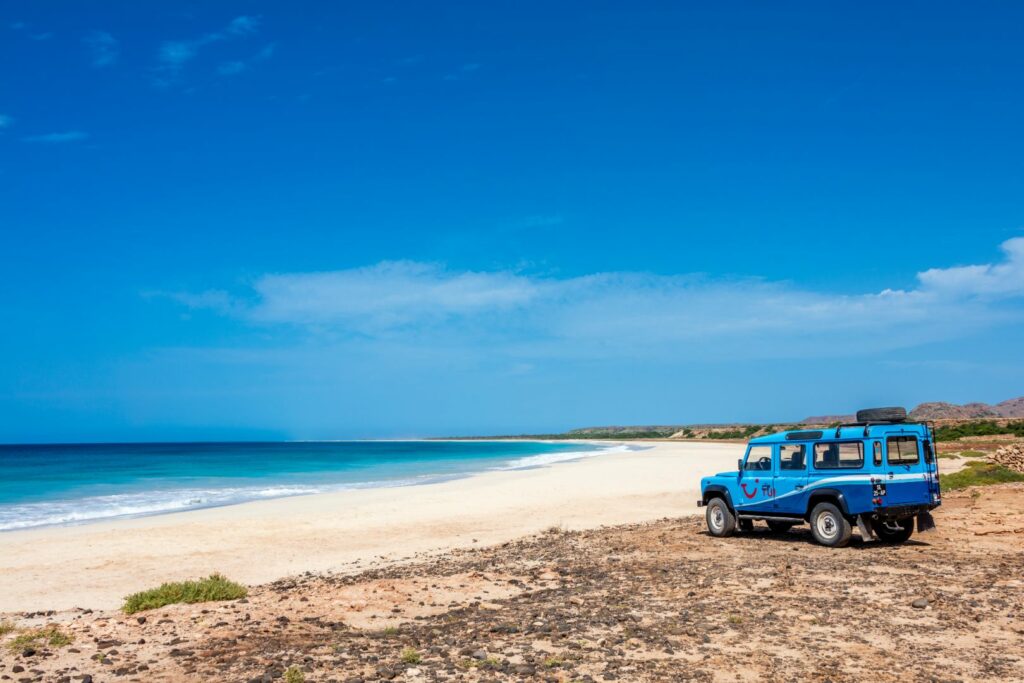
- Boa Vista is renowned for the incredible beaches it has to offer, with over 55 kilometres of sandy coastline to explore and even more wonder underwater,
- It’s the busiest and most popular island for holidays boasting a huge selection of luxury resorts, but with a huge focus on relaxation.
Best for:
- Sun seekers and beach lovers looking to enjoy a relaxing holiday
Popular excursions:
- Explore the vast sand dunes by 4×4, taking in some of the local towns, vibrant streets and traditional architecture.
- Head out at night on a turtle watchoing tour, to see the loggerhead turtles come ashore and lay their eggs.
Sal
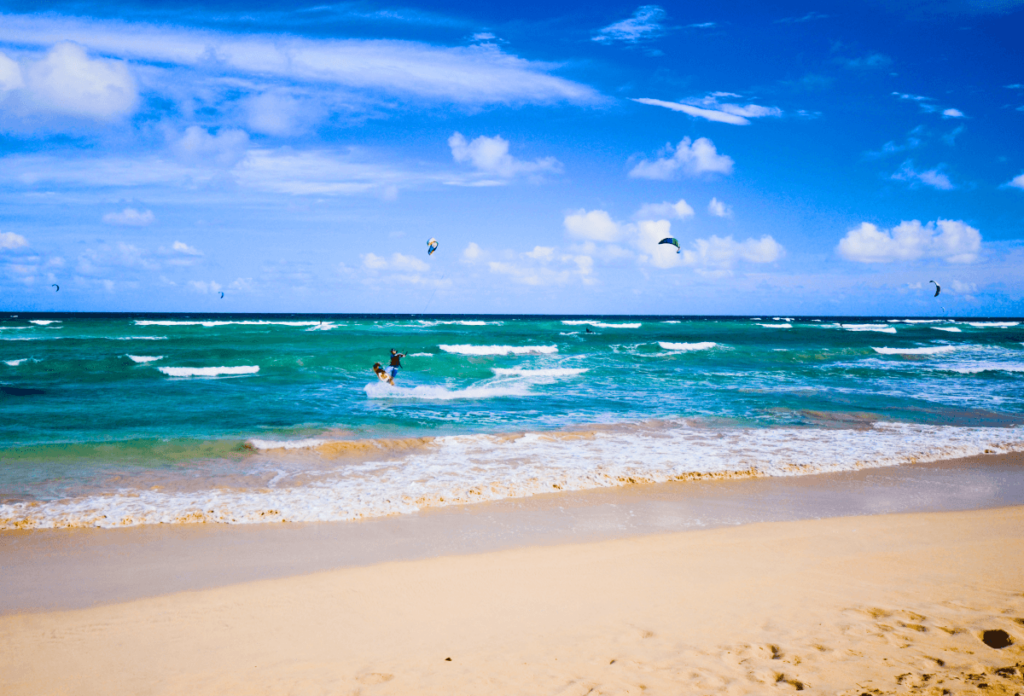
- Sal is famous for its stunning white-sand beaches and crystal-clear waters where water sports enthusiasts thrive – think, kite surfing, windsurfing, and diving,
- There’s a lively social scene, especially around Santa Maria, with bars, restaurants, and beach clubs adding to the vibrant holiday atmosphere.
Best for:
- Adventure seekers and water sports fans – those looking for a lively beach holiday
Popular excursions:
- Dive into the underwater world of Sal, and spot the vibrant marine life with a fully trained professional instructor.
- Get your adrenaline going with a buggy tour around Sal, navgiating winding tracks, sandy bays and the turquoise waters.
Santiago
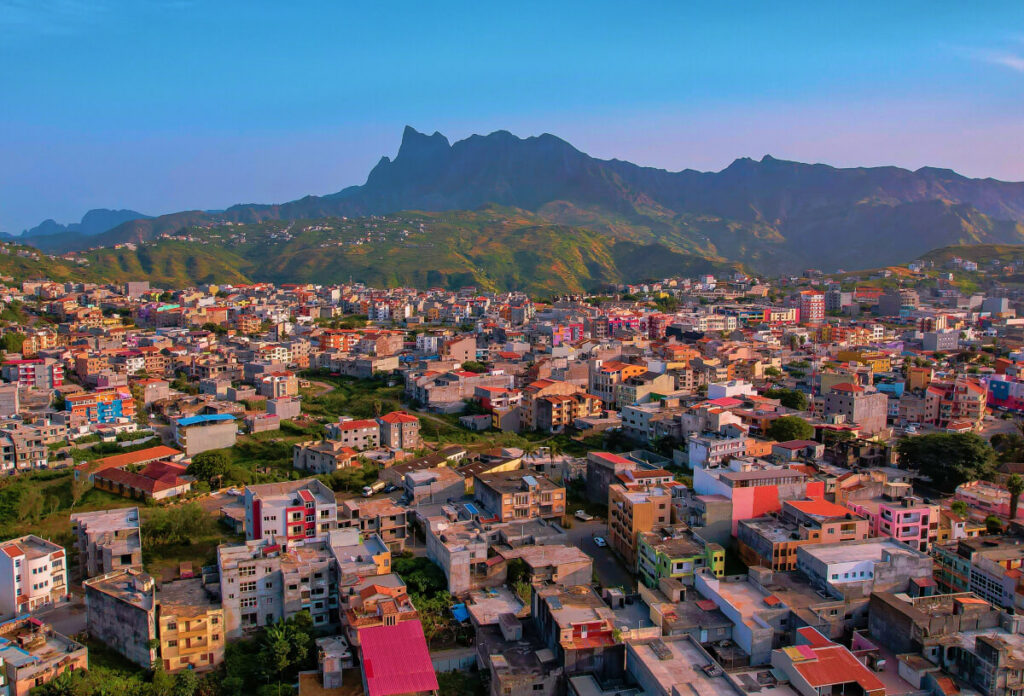
- Santiago is the largest and most populous island in Cape Verde, offering a mix of cultural, historical, and natural attractions – plus, it’s home to the capital, Praia.
- With its vibrant local culture, markets, and scenic mountains, Santiago provides a well-rounded holiday experience with sun, sand and culture.
Best for:
- Culture and history enthusiasts and those who like a city vibe
Popular excursions:
- Visit Cidade Velha, a UNESCO World Heritage Site and the oldest settlement in Cape Verde – walk through its historic streets, see the Fort Real de São Felipe, and learn about the island’s colonial past and rich cultural heritage.
- Spend a few hours at Tarrafal Beach, known for its golden sand, calm waters, and fresh seafood.
São Vicente
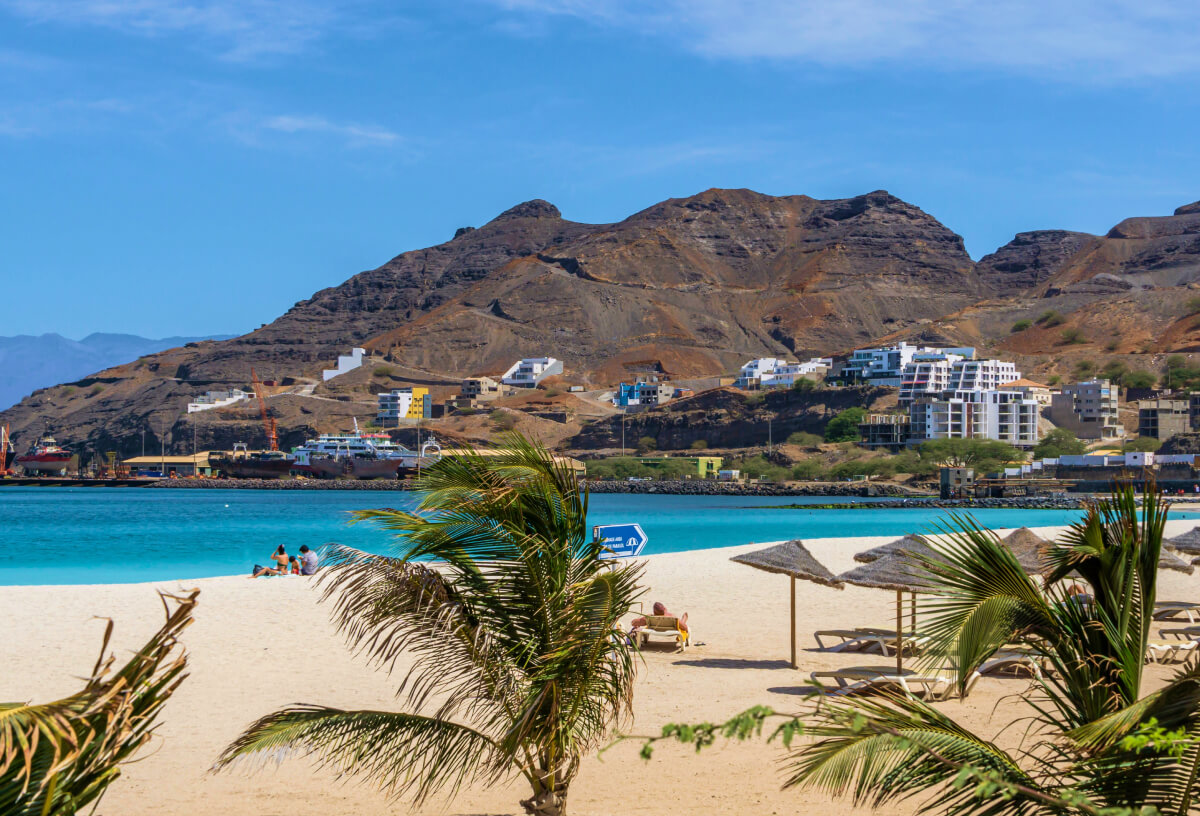
- São Vicente is the cultural heart of Cape Verde, centered around the vibrant city of Mindelo, known for its music, festivals, and colorful colonial architecture,
- Enjoy a lively atmosphere with art, music, and nightlife, and all-round authentic Cape Verdean life.
Best for:
- Culture enthusiasts
Popular excursions:
- Explore the local highlights and lively atmosphere of Mindelo with a walking tour and local food tasting.
- Head on a quad bike adventure exploring the rocky terrain and scenic views with a side of adrenaline.
Santo Antão
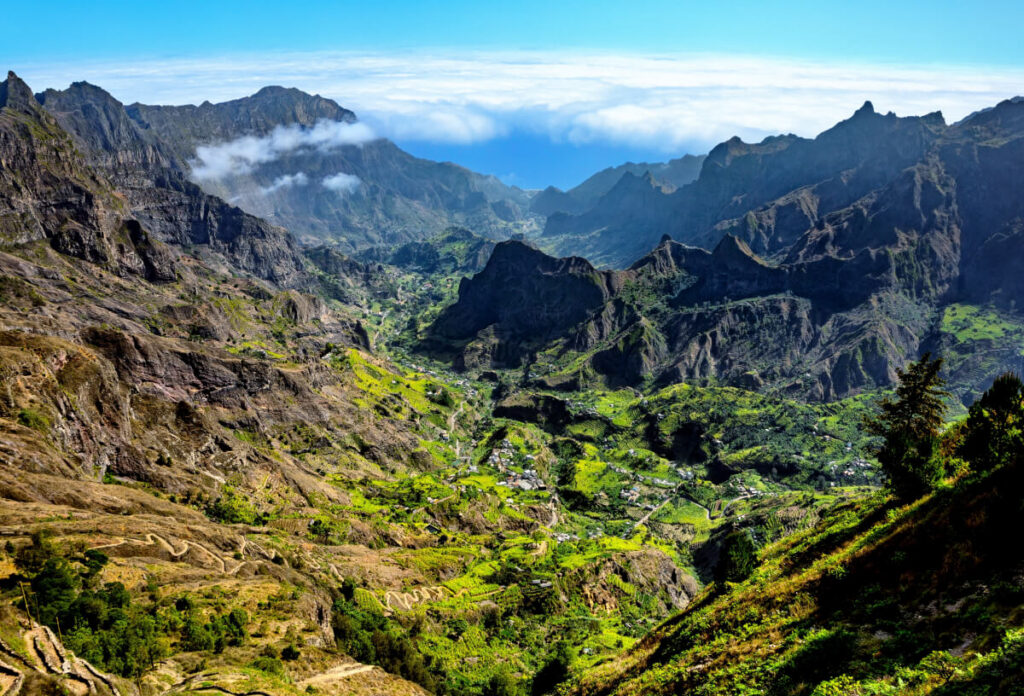
- Santo Antão is Cape Verde’s greenest and most mountainous island, famous for its dramatic cliffs, lush valleys, and scenic hiking trails,
- The island is less touristy than the beach islands like Sal and Boa Vista, offering a more authentic and tranquil experience with charming villages, terraced farmland, and stunning viewpoints.
Best for:
- Hikers and nature and adventure lovers
Popular excursions:
- Discover a hidden track among through the mountain villages, taking in the Vinha waterfall and a traditional lunch.
- Hike through Santo Antão’s lush valleys, tropical vegetation, and mountain villages, with a guided visit to the Cova crater and Ribeira de Paul
A 7 day island hopping itinerary
Day 1-2: Boa Vista for beaches & relaxation
- Arrive in Boa Vista and check into your resort
- Spend the day relaxing by the pool or on the island’s 55 km of sandy coastline.
- This is the time for a magical turtle watching tour!
Day 3: Sal for adventure & water sports
- Spend the day at Santa Maria Beach, and try windsurfing or kite surfing – even the banana boat!
- Enjoy the nightlife in the evening in one of the many local bars or restaurants
Day 4: São Vicente for local culture
- Explore Mindelo’s music scene and colonial streets on São Vicente
Day 4: Santo Antão for a hiking adventure
- Head to Santo Antão for a hike through the enchanting mountain villages.
Day 5: Santiago for a mix of culture, history and relaxation
- Visit Cidade Velha, explore Praia’s markets, our lounge on Tarrafal beach.
Day 6-7: Boa Vista for final relaxation
- Spend the last of your holiday relaxing and topping up your golden tan before heading back home.
Now you’ve got all the information needed for island hopping in Cape Verde, what are you waiting for?
We’ve got an extensive range of Cape Verde holiday deals so there’s sure to be something for you.
Explore even more activities and excursions on offer in Cape Verde to build out your perfect island hopping itinerary.
You may also like
Cape Verde
